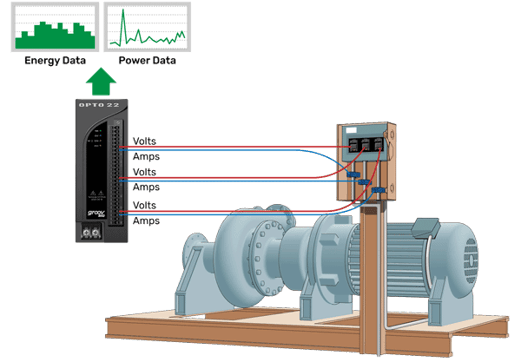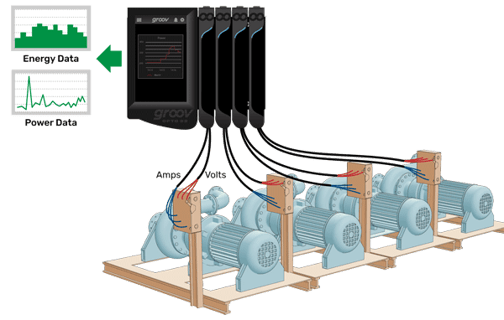New website resources outline how to securely access and share your energy data.
Opto 22 gives you lots of options when it comes to helping you monitor your power and energy usage. The groov RIO EMU (energy monitoring unit) is an edge I/O module meant for easy distributed power and energy monitoring of one 3-phase load. Check out our previous announcements for all the details.
However, for monitoring multiple loads located near each other, and for a complete system including real-time control, groov EPIC with power monitoring modules might be the better choice.
But, you might have more questions about which is the right solution for you, why and how do you get started monitoring your machine health or energy data? And how do you do it securely?
Check out our new website resources for some guidance on these important energy topics.
You'll find the information organized into 4 sections.
Power and Energy Monitoring with groov Products
Are you working on machine health initiatives and predictive maintenance?
Do you want to track (and reduce) operating costs?
Learn how and why groov products offer a simple, flexible, industrial way to monitor power and energy where it's used and securely send that data where it's needed for analysis and decision-making.
Where Can Power & Energy Data Go?
So you're ready to monitor power and energy usage. Where do you want to send the data, and how do you get it there?
See how the built-in software in groov products allows communication with both IT and OT protocols and how easy it is to move data where you want it. This section explains all the ways you can use the data you collect.
Why and How to Get Started Monitoring Power & Energy
Not sure what PM/EM has to do with you? Take a look at two reasons you may want to monitor your power and energy usage and see how to get started with each:
- Monitor power for machine health
- Monitor energy to reduce operating costs
Choosing Current Transformers (CTs)
OK, you've got your EMU module in hand. What other equipment do you need to start? This last section covers the three specifications you need to know to choose CTs suited to the load you're measuring:
- Primary
- Inner diameter
- Secondary
As always, contact us with any additional questions you have about the right energy monitoring tools for your machines and applications. Our team of engineers is here to help.



